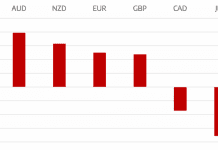The digital era has transformed the landscape of marketing. With the advent of new technologies, businesses are now able to implement marketing strategies that are not only effective but also cost-efficient. This shift from traditional, high-cost methods to innovative, tech-driven solutions has enabled companies to reduce expenses while enhancing revenue. One-time investments in digital tools and platforms offer long-term benefits, marking a significant change in how businesses approach marketing.

This article explores some ways technology has led to more cost-effective marketing for businesses, helping even those with limited capital compete with larger enterprises.
1. Digital Advertising Platforms
Digital advertising platforms like Google Ads and Facebook Ads have revolutionized the marketing world. Traditional advertising methods, such as print and television, often come with high costs and uncertain returns. In contrast, digital platforms offer a more targeted approach. Businesses can now reach specific audiences at a fraction of the cost, ensuring that their advertising dollars are more effectively spent. These platforms provide detailed analytics, allowing companies to understand the performance of their ads and make data-driven decisions.
2. Efficient Content Creation
Gone are the days when high-quality content creation required substantial investments in photography studios and professional shoots. Technology has paved the way for more efficient and cost-effective content creation. Businesses can now simply buy stock photos at a nominal price and use graphic design tools to use these images in social media posts or for SEO articles. This democratization of content creation tools allows even small businesses to compete with larger corporations in terms of online presence.
3. Social Media Marketing
Social media platforms offer a unique opportunity for cost-effective marketing. Platforms like Facebook, Instagram, and Twitter allow businesses to establish a presence and engage with their audience with little to no financial investment. A professional can help you learn about targeted Facebook Ads, ensuring that your campaigns reach the right audience and maximize engagement. By leveraging data analytics and audience insights, businesses can refine their strategies and improve conversion rates. The organic reach of social media, coupled with its targeted advertising options, provides a powerful tool for businesses to increase their visibility. The ability to create and share content rapidly also means that companies can stay relevant and engage with trends without the need for large marketing budgets.
4. Email Marketing Automation
Email marketing has long been a staple in the marketer’s toolkit, but automation has taken it to a new level. Automated email campaigns save significant time and resources, allowing businesses to reach large audiences with personalized messages. Tools like Mailchimp and Constant Contact offer user-friendly platforms where businesses can design, schedule, and track the performance of their email campaigns. This not only reduces the manpower required but also increases the effectiveness of the campaigns through personalization and timely delivery.
5. Analytics and Data-Driven Strategies
The availability of analytics tools has been a game-changer in making marketing more cost-effective. Platforms like Google Analytics provide businesses with insights into customer behavior, website traffic, and campaign performance. This data is crucial for making informed decisions about where to allocate marketing resources. By understanding what works and what doesn’t, businesses can optimize their strategies, focus on high-ROI activities, and avoid wasting money on ineffective tactics.
6. SEO Optimization Tools
Search Engine Optimization (SEO) is an essential aspect of digital marketing. By optimizing web content to rank higher in search engine results, businesses can increase their visibility without the high costs of paid advertising. SEO tools like Google Analytics, SEMrush, and Moz offer insights into keywords, backlink strategies, and content performance. These tools help businesses understand what their target audience is searching for and how to tailor their content to meet these needs. The use of SEO optimization tools is a cost-effective strategy because it focuses on organic traffic, which, while taking time to build, offers long-term benefits at a relatively low cost. Hence, small businesses or startups can benefit immensely from SEO.
7.Customer Relationship Management (CRM) Systems
CRM systems like Salesforce and HubSpot have revolutionized how businesses interact with their customers. These systems provide a centralized platform for tracking interactions, managing leads, and automating marketing efforts. By using CRM systems, businesses can enhance customer engagement and retention without the need for extensive human resources. These systems help segment audiences, personalize communication, and track the customer journey, leading to more effective marketing strategies at a lower cost.
8. Influencer Partnerships
Ahh! The world of influencers. This is one digital marketing trend that must not be skipped. Influencer marketing has emerged as a powerful, cost-effective marketing strategy. By partnering with influencers, businesses can tap into their established audiences at a fraction of the cost of traditional advertising. Influencers, being trusted figures in their respective niches, can provide authentic endorsements, making this form of marketing not only more affordable but often more effective. Small and medium-sized businesses can particularly benefit from this strategy by collaborating with micro-influencers, who have smaller but highly engaged audiences.
9. Online Marketplaces and Platforms
The rise of online marketplaces and platforms like Amazon, Etsy, and Shopify has provided businesses with cost-effective avenues to market and sell their products. These platforms eliminate the need for physical storefronts, reducing overhead costs significantly. They also offer built-in customer bases, easy-to-use marketing tools, and insights into customer behavior, allowing businesses to reach a wider audience with minimal investment. The accessibility of these platforms means that even small businesses can compete on a global scale.
10. Virtual Events and Webinars
The shift to virtual events and webinars has been a significant cost-saving development for businesses. Organizing physical events can be expensive, considering the costs of venues, travel, and accommodation. Virtual events, on the other hand, can reach a broader audience at a fraction of the cost. Webinars and online workshops provide interactive platforms to engage with customers, showcase products, and establish thought leadership. These digital events are not only more affordable but also offer greater flexibility and tracking capabilities.
Conclusion
The impact of technology on marketing cannot be overstated. It has opened up new avenues for businesses to promote their products and services in a cost-effective manner. From leveraging digital advertising platforms to embracing social media marketing, the opportunities are vast and varied. The key is to utilize these tools to create personalized, engaging, and relevant marketing campaigns that resonate with the target audience. As technology continues to evolve, it will undoubtedly bring even more innovative solutions, further enhancing the efficiency and effectiveness of marketing strategies. Businesses that adapt and embrace these changes will find themselves well-positioned to succeed in this dynamic, digital marketplace.
I am a writer based in London, specialising in finance, trading, investment, and forex. Aside from the articles and content I write for IntelligentHQ, I also write for euroinvestor.com, and I have also written educational trading and investment guides for various websites including tradingquarter.com. Before specialising in finance, I worked as a writer for various digital marketing firms, specialising in online SEO-friendly content. I grew up in Aberdeen, Scotland, and I have an MA in English Literature from the University of Glasgow and I am a lead musician in a band. You can find me on twitter @pmilne100.




































